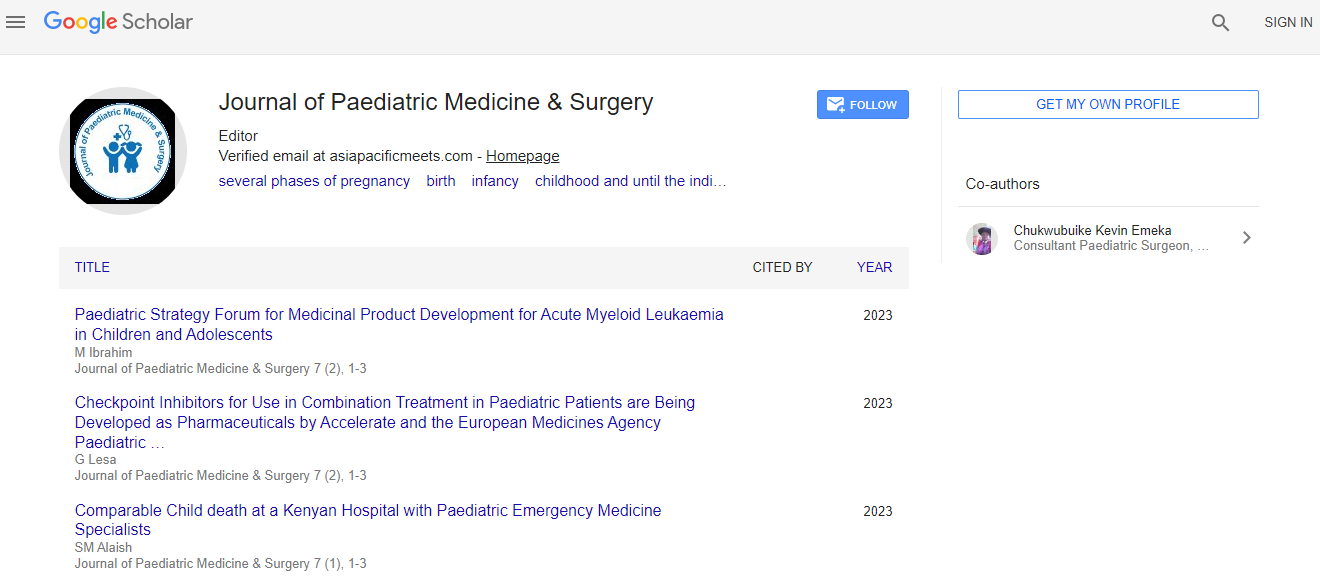Clinical Pediatrics and Pediatric Surgery 2017: Pediatric asthma mortality and recent advances in asthma education - Rizwana Popatia - Weill Cornell Medical College
*Corresponding Author:
Copyright: © 2017 . This is an open-access article distributed under the terms of the Creative Commons Attribution License, which permits unrestricted use, distribution, and reproduction in any medium, provided the original author and source are credited.
Abstract
Asthma is the foremost chronic disease in kids with prevalence of pediatric asthma close to 10% in United States as per recent CDC figures. Asthma has been cumulative since the early 1980s in all age, sex and racial groups. Asthma still causes substantial morbidity and humanity internationally and negligible upgrading has been seen in key outcomes over the last decade despite increasing treatment costs. This evaluation recaps recent advances in the management of asthma in children and adolescents. It emphases on the need for modified action plans based on heterogenous asthma pathophysiology, the use of the terminology ‘asthma attack’ ended exacerbation to instill widespread understanding of severity, and the need for every attack to trigger a organized appraisal and focused strategy. The authors discuss problems in diagnosing asthma, accuracy and use of Fractional exhaled nitric oxide both as second line test and as a method to monitor treatment adherence or guide the choice of pharmacotherapy. The authors deliberate acute and long-term management of asthma. Asthma treatment areas are to minimalize symptom burden, prevent attacks and (where possible) decrease risk and impact of progressive pathophysiology and adverse outcomes. The authors deliberate pharmacological organization; optimal use of short acting β2 agonists, long acting muscarinic antagonist (tiotropium), use of which is relatively new in pediatrics, allergen specific immunotherapy, biological monoclonal antibody treatment, azalide antibiotic azithromycin, and the use of vitamin D. They also deliberate electronic monitoring and adherence devices, direct observation of therapy via mobile device, temperature controlled laminar airflow device, and the importance of considering when symptoms may actually result from dysfunctional breathing rather than asthma.
Children with heavy asthma have a high degree of respiratory morbidity despite treatment with high doses of inhaled corticosteroids and are therefore very difficult to treat. This review will deliberate phenotypic and pathogenic aspects of severe asthma in childhood, as well as remaining knowledge gaps. As a group, children with simple asthma have a number of distinct phenotypic features compared to children with mild-to-moderate asthma. Clinically, children with stark asthma are distinguished by greater allergic sensitization, increased exhaled nitric oxide. These results are escorted by physical airway changes and augmented and dysregulated airway irritation and oxidant stress which may explain the differential nature of corticosteroid responsiveness in this population. Because adults with heavy asthma themselves are a heterogeneous group, current efforts are focused on improved definition and sub-phenotyping of the disorder. While the clinical relevance of phenotyping approaches in severe asthma is not yet clear, they may provide important insight into the mechanisms underlying the disorder.

 Spanish
Spanish  Chinese
Chinese  Russian
Russian  German
German  French
French  Japanese
Japanese  Portuguese
Portuguese  Hindi
Hindi 